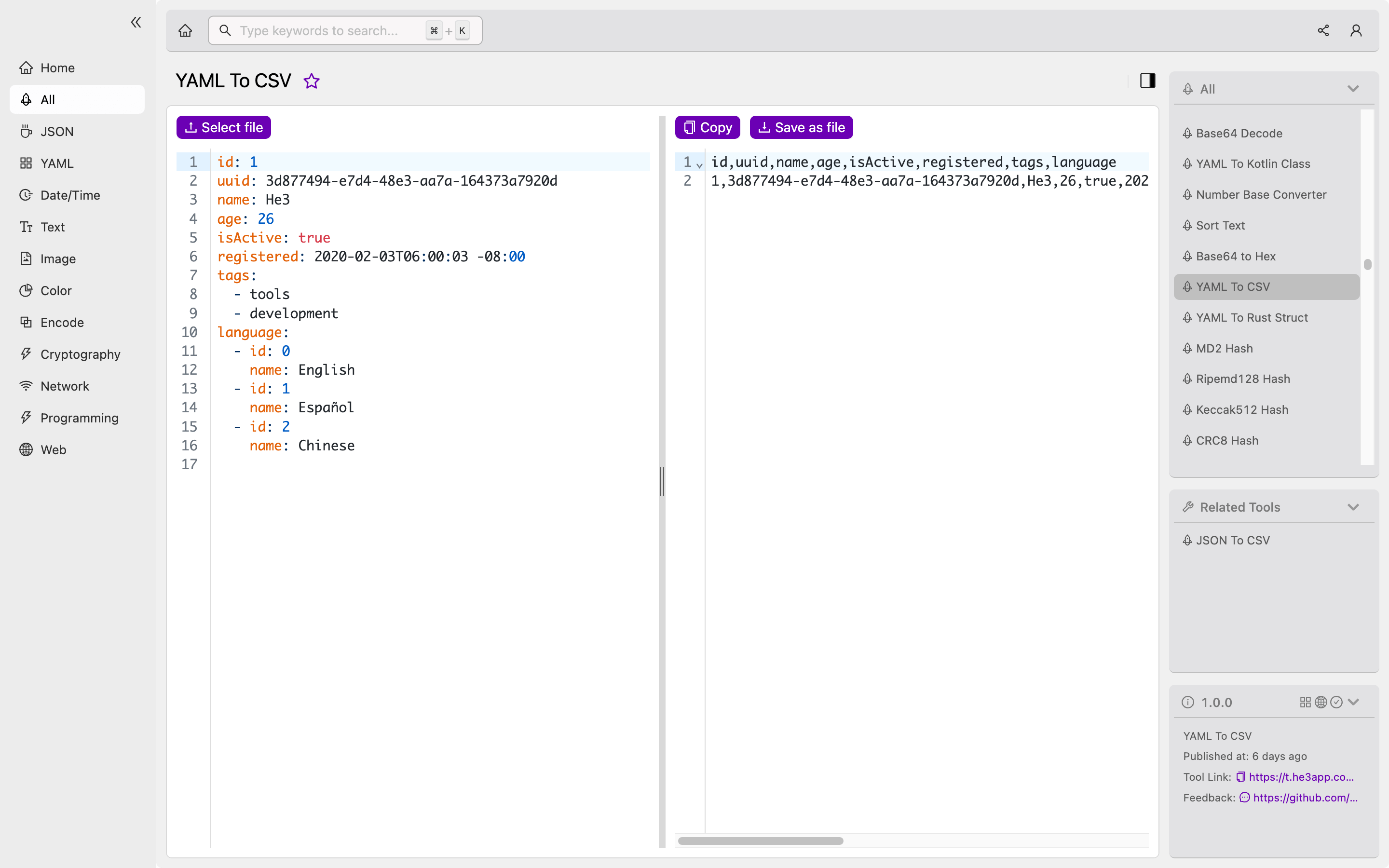Understanding YAML To CSV Conversion: A Guide for Developers
If you’ve ever worked with data, you know that it comes in various formats. While some formats are more common than others, you may come across a need to convert data from one format to another. One such conversion process is the YAML to CSV conversion. In this guide, we’ll take a closer look at this process and how it works.
What is YAML?
YAML stands for “YAML Ain’t Markup Language”. It is a human-readable data serialization language commonly used for configuration files, data exchange between languages, and more. YAML is often used because of its simplicity and readablility. YAML files can be written using indentation rather than brackets, making it accessible to non-programmers.
What is CSV?
CSV stands for “Comma Separated Values”. It is a file format used to store and exchange information in a plain-text format. Each line in a CSV file represents a row of data, with each value separated by a comma. CSV files are commonly used for data exchange between systems or applications.
How does YAML To CSV Conversion Work?
Converting data from YAML to CSV requires a few steps. Firstly, the YAML file is read and parsed into a data structure. Then, the data is transformed into a CSV format by creating a table with rows and columns. Each row in the table represents one YAML document and each column represents a key-value pair in the YAML document.
Here’s an example of how to convert a YAML file to CSV using Python:
import yaml
import csv
with open("data.yaml", "r") as file:
data = yaml.safe_load(file)
with open("data.csv", "w") as file:
writer = csv.writer(file)
writer.writerow(data[0].keys())
for item in data:
writer.writerow(item.values())In this example, we first open the YAML file and load its contents into a Python object using the yaml.safe_load() function. Next, we create a CSV file and use the csv.writer() function to write the data to the file. Finally, we iterate over the data and write each row to the CSV file.
Key Features of YAML To CSV Conversion
Here are some key features of YAML to CSV conversion:
- Simple and easy to use
- Supports conversion of hierarchical data
- Can handle large data sets
- Easily extensible to support additional formats
- Supports various programming languages
Scenarios
YAML to CSV conversion can be used in various scenarios. Here are a few examples:
- Converting YAML configuration files to CSV for easier data analysis
- Converting YAML data into a format that can be easily imported into a database
- Converting YAML data into a format that can be easily shared with other applications
Misconceptions and FAQs
Misconception: YAML and CSV are the same thing
While YAML and CSV are both used to store and exchange data, they are not the same thing. YAML is a serialization language that can represent complex data structures, while CSV is a plain-text format used to store and exchange tabular data.
FAQ 1: How do I convert CSV to YAML?
To convert CSV to YAML, you can use a YAML library for your chosen programming language. The process involves reading the CSV file and transforming it into a YAML object.
FAQ 2: Can I convert YAML to other file formats?
Yes, you can convert YAML data to other file formats such as JSON, XML, or HTML using libraries and tools.
Or you can use YAML To CSV tool in He3 Toolbox (https://t.he3app.com?3x0c ) easily.

Conclusion
YAML to CSV conversion is a simple and easy-to-use process that can be used in various scenarios. With the right tools and libraries, developers can easily convert data from one format to another. By understanding the key features and misconceptions of YAML to CSV conversion, developers can make informed decisions on when and how to use this process.
References:
